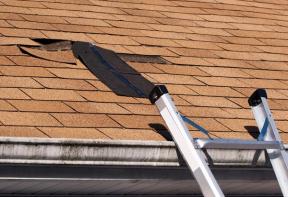Spring clean your property
It’s been a long, long winter. As warmer weather starts to arrive, here’s what you need to know about maintenance for your yard, home exterior and landscaping features
The snow is melting, the sun is shining, and your eavestrough is leaking enough water to create a small pond in your backyard. Ah, the joys of spring! If you’ve discovered a whole host of problems with your property as the snow recedes, you’re not alone. We consulted Toronto landscaper Rick Hofstetter of Hofstetter Landcaping for DIY tips to get your yard in tip-top shape for summer barbecue season.
Eavestrough troubles
Leaking eavestroughs are a common problem and it usually comes down to one of two things: blocked eaves or ice damage.
When the next big thaw hits, get up on a ladder and make sure that water has a place to go: Pull all debris from the troughs and make sure your downspouts are clear. Also ensure your downspouts point away from your home, so water doesn’t pool around your foundation, causing leaks or flooding. If you’re lucky, this will help stop ice from building up and then flooding when it melts.
If the ice has damaged your eavestrough, it’s time to replace it. If it’s a joint that’s leaking, you can caulk the joint with some roof-repair caulking or construction adhesive and call it a day. If there is a hole in your eavestrough, it’s up to you as to whether you want to do a patch (whereby you snip out the offending section with tin snips, cut a new section to overlap the old edges and rivet it back together) or simply replace the section.
If your eaves are sagging, you need to replace the spikes and ferrules holding the eaves to the house. The trough should always run down to the nearest downspout, so your eavestrough should never be perfectly level. For more DIY tips, check out Stop the drip.
Roof repair
Every year, get up on a ladder and inspect your roof for damage from winter’s ice and snow. Shingles shouldn’t be curled, torn, cupped or missing; if they are, you’re going to need to replace them. If it’s only a few shingles, you can often DIY; if your entire roof is in bad shape, you should call in a professional to replace it. Also look for damage or deterioration of the flashing around chimneys, vents and other joins in your roof; damage or deterioration in the low spots on your roof; or pooling of water in areas of your roof. All these are signs of a roof that’s in trouble.
It’s also important to look inside your house, too. Go up into the attic with a flashlight and check for water stains, which indicate leaks; this is especially important to look for around flues, plumbing vents and chimneys. If you are comfortable resealing the join or flashing, and the wood isn’t damaged, give it a shot: chip out the old caulking and mortar along the edges, and recaulk to joints. If there is extensive water damage inside the house, call in a pro.
Jump to a section
- Page 1 : Eavestrough and roofing
- Page 2 : Patio stone and deck heave
- Page 3 : Fountain DIY and wood refinishing
To leave a comment, please log in












No comments